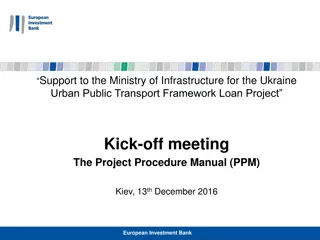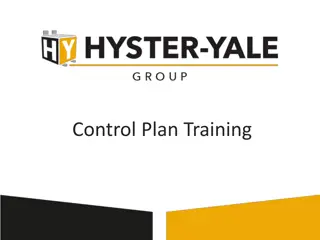Maintaining Project Plans Effectively
Keeping track of project plans is essential for successful project management. It helps in monitoring work assignments, durations, costs, and progress. By tracking details like resource assignments, project timeline, and costs, project managers can make informed decisions and ensure project success. Utilize tools like project status reporting features, cost management techniques, and earned value estimation for effective plan monitoring and control.
Download Presentation

Please find below an Image/Link to download the presentation.
The content on the website is provided AS IS for your information and personal use only. It may not be sold, licensed, or shared on other websites without obtaining consent from the author.If you encounter any issues during the download, it is possible that the publisher has removed the file from their server.
You are allowed to download the files provided on this website for personal or commercial use, subject to the condition that they are used lawfully. All files are the property of their respective owners.
The content on the website is provided AS IS for your information and personal use only. It may not be sold, licensed, or shared on other websites without obtaining consent from the author.
E N D
Presentation Transcript
CHECKING PLAN DURATION, COST AND WORK Why keep a track of plan?? After you create a task list and assign resources to tasks, your plan contains a large number of details. Usually, these details are not visible in the default view that is displayed. The key indicators of a plan are: Who is assigned to do what work in the plan? How long will it take to complete the project? How much will it cost?
HANDS ON Project status reporting features including views and reports. Enable the Timeline view: On the View tab, in the Split View group, select the Timeline check box. This allows you to see a complete time line of the project in line with the Gantt Chart. Next, have a look at the project costs: On the View tab, in the Data group, click Tables, and then click Cost. The Cost table appears, replacing the Entry table. The Cost table includes various cost values for each subtask Note the project summary task s total cost value and map it with the cost in the project information.
WORK ASSIGNMENT VALUES VIA REPORT On the Report tab, in the View Reports group, click Resources and then click Resource Overview. In this report, you can see two charts and one table that contain resource-assignment details. Resource Stats The chart contains only remaining work values. Because, no base line has been stored nor any actual work has been reported.
COST MANAGEMENT EARNED VALUE ESTIMATION Activity: Construct a room with 4 sides (scope) Estimation duration each side 1 day Estimate cost - each side- $ 1000 Default relation between activities DFS Find Actuals PV, EV, AC, BAC, CV, CPI, SV, SPI Find Forecasters (EAC, ETC, VAC, TCPI)
ANALYSIS Day 1 Day 1- - 100 % Done @ $1000 100 % Done @ $1000 Day 2 Day 2- - 100 % Done @ $1200 100 % Done @ $1200 Day 3 Day 3- - 50% Done @ $600 50% Done @ $600 (We are here today) (We are here today) Day 4 Day 4- - Not yet done Not yet done
Planned Value (PV): Planned Value (PV): According to the plan we were to complete 3 sides in 3 days and spend $ 3000 According to the plan we were to complete 3 sides in 3 days and spend $ 3000 Therefore PV = 3000 Therefore PV = 3000 Earned Value (EV): Earned Value (EV): Work accomplished so far and cost incurred so far as per the Work accomplished so far and cost incurred so far as per the original plan original plan Therefore EV = D1, 1000 + D2, 1000 + D3 500 = 2500 Therefore EV = D1, 1000 + D2, 1000 + D3 500 = 2500 Actual Cost: Actual Cost: Actual Cost, is the cost incurred against the planned cost Actual Cost, is the cost incurred against the planned cost AC = D1, 1000 + D2, 1200 + D3, 600 = 2800 AC = D1, 1000 + D2, 1200 + D3, 600 = 2800 Budget At Completion (BAC): Budget At Completion (BAC): Budget at completion as planned Budget at completion as planned As planned D1, 1000 + D2, As planned D1, 1000 + D2, 1000 1000 + D3, + D3, 1000 1000 + D4, 1000 = $ 4000 + D4, 1000 = $ 4000
LETS WORK IT OUT! Cost Variance (CV): Cost Variance (CV): Gives us the variance incase the project is going Gives us the variance incase the project is going overbudget overbudget or or underbudget underbudget CV = EV CV = EV AC = ?? AC = ?? Cost Performance Index (CPI): Cost Performance Index (CPI): CPI = CPI = EV/AC = ?? EV/AC = ?? Schedule Variance (SV): Schedule Variance (SV): SV = SV = EV EV- -PV = ?? PV = ?? Schedule Performance Index (SPI): Schedule Performance Index (SPI): SPI = EV/PV SPI = EV/PV = ?? = ?? To To Complete Performance Index (TCPI): Complete Performance Index (TCPI): TCPI = BAC TCPI = BAC- -EV/BAC EV/BAC- -AC AC
FORECASTING Estimate At Completion (EAC): Estimate At Completion (EAC): EAC = BAC/CPI EAC = BAC/CPI = ?? = ?? Estimate Estimate To Complete: To Complete: The helps in computing if the remaining money in budget would be sufficient for the The helps in computing if the remaining money in budget would be sufficient for the remaining work remaining work Remaining work = D3, 50% & D4, 100 % Remaining work = D3, 50% & D4, 100 % ETC= EAC ETC= EAC- -AC AC = ?? = ?? Variance At Complete Variance At Complete VAC = BAC VAC = BAC- -EAC EAC=?? =??
Cost Variance (CV): Cost Variance (CV): Gives us the variance incase the project is going Gives us the variance incase the project is going overbudget CV = EV CV = EV AC = 2500 AC = 2500 2800 = 2800 = (300) (300) This means as on today we are over budget by $300 This means as on today we are over budget by $300 Cost Performance Index (CPI): Cost Performance Index (CPI): CPI = EV/AC = 2500/2800 = 0.89 CPI = EV/AC = 2500/2800 = 0.89 The means, as on today we are benefitting worth $0.89 for every $1 spent, a CPI of less than The means, as on today we are benefitting worth $0.89 for every $1 spent, a CPI of less than 1 is always bad for the project 1 is always bad for the project Schedule Variance (SV): Schedule Variance (SV): SV = EV SV = EV- -PV = 2500 PV = 2500- -3000 = 3000 = (500) (500) Indicates how much ahead or behind the schedule schedule a project is running Schedule Performance Index (SPI): Schedule Performance Index (SPI): SPI = EV/PV = 2500/3000 = SPI = EV/PV = 2500/3000 = 0.83 (again less than 1 is bad) 0.83 (again less than 1 is bad) SPI is the speed of the performance SPI is the speed of the performance overbudget or or underbudget underbudget
Forecasters: Forecasters: Estimate At Completion (EAC): Estimate At Completion (EAC): EAC = BAC/CPI = 4000/0.89 = 4494 EAC = BAC/CPI = 4000/0.89 = 4494 This helps in identifying if the allocated budget would be enough. This helps in identifying if the allocated budget would be enough. Estimate To Complete: Estimate To Complete: The The helps in computing if the remaining money in budget would be sufficient for the remaining helps in computing if the remaining money in budget would be sufficient for the remaining work work Remaining work = D3, 50% & D4, 100 % Remaining work = D3, 50% & D4, 100 % ETC= EAC ETC= EAC- -AC = 4494 AC = 4494- -2800= 2800=1694 1694 Variance At Complete Variance At Complete VAC = BAC VAC = BAC- -EAC= 4000 EAC= 4000- -4494= 4494= (494) (494) To Complete Performance Index (TCPI): To Complete Performance Index (TCPI): TCPI = BAC TCPI = BAC- -EV/BAC EV/BAC- -AC = 4000 TCPI implies that for every dollar spent we need to get the work done worth $1.2 TCPI implies that for every dollar spent we need to get the work done worth $1.2 AC = 4000- -2500/4000 2500/4000- -2800= 1.2 2800= 1.2





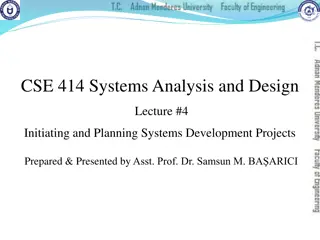
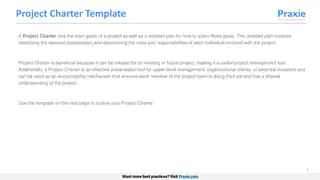



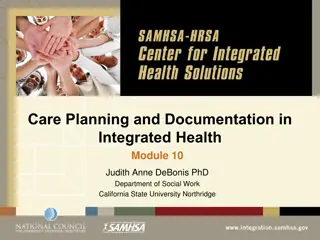
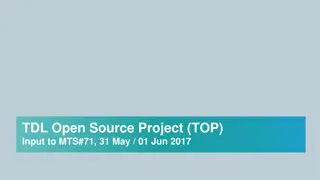

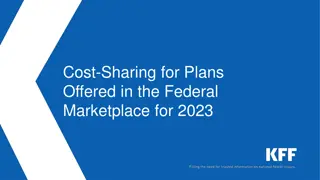

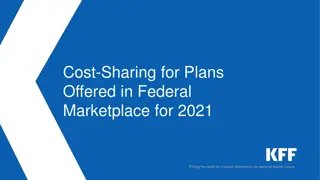
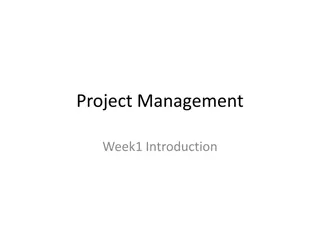



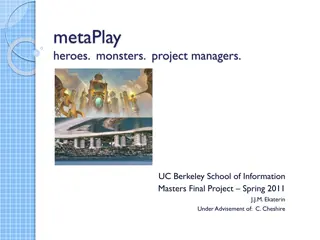
![Project Initiation Document for [Insert.Project.name] [Insert.Project.number]](/thumb/226757/project-initiation-document-for-insert-project-name-insert-project-number.jpg)
